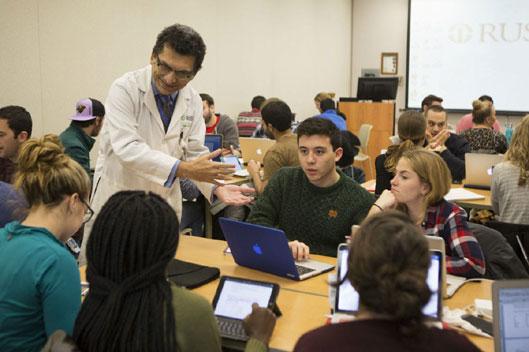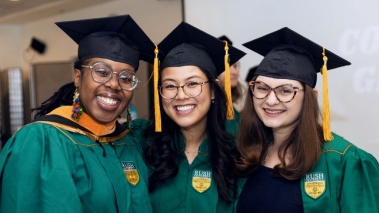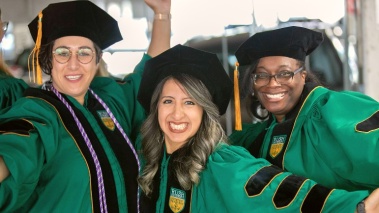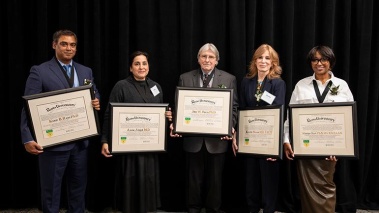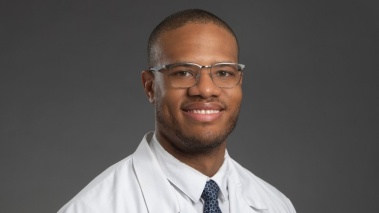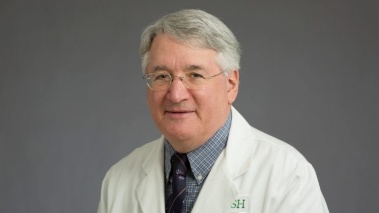Rush Medical College implements new 'flipped' curriculum
Incoming first-year students will be the first class at Rush Medical College to receive their education without ever attending traditional classroom lectures. The oldest medical school in Chicago, Rush will be the first in Illinois and one of only a handful of medical schools in the United States to fully convert or “flip,” its classroom learning to an innovative new model with no traditional lectures and an emphasis on team-based exercises instead.
The traditional medical school curriculum includes two years of classroom lecture and labs focusing on the human body’s major systems and the diseases that affect them, followed by two years of rotations through various clinical areas in hospitals. In the “flipped classroom” model, first- and second-year students study lecture content on their own and use classroom time to interact with peers and apply their newly gained knowledge to real-life scenarios.
The self-study content can take the form of online animated videos, audio recordings, and selected readings and exercises. Students then spend their class time working in small groups to apply what they’ve learned to those cases, with faculty as facilitators.
“Rush is starting to train medical faculty to move from being a ‘sage on the stage’ to a ‘guide on the side,’” says K. Ranga Rama Krishnan, MB, ChB, the Henry P. Russe, MD, Dean of Rush Medical College.
Rush Medical College faculty, students and staff collaboratively designed the new curriculum, which was tested in a successful pilot program this past academic year. Now the change will be implemented fully with the Sept. 5 start of Rush University’s 2017-2018 academic year.
Adapting to how 21st century students learn
One aspect of the pilot allowed students to view prerecorded instructional content at their own schedule and pace. Though they weren’t encouraged to speed-listen, medical students put their own spin on things, showing creativity in effective time management.
“This recognizes the reality of how our students learn,” says Robert Leven, PhD, assistant dean for basic sciences education. “The majority of students don’t often go to lectures. They use other resources already, so we’re really just embracing what they’ve already been doing.”
With lecture removed from in-class time, students instead focus on tackling case studies in groups. Through this approach, Leven and other medical college faculty stress, the renewed MD program curriculum better prepares students to enter a residency after graduation and make an immediate impact on patients.
This old “two plus two” model of class learning followed by rotations works, says Elizabeth Baker, MD, associate dean for education, but it can delay the clinical significance of the material presented. In revamping its MD program curriculum for the pre-clerkship period,
Rush Medical College looked at ways to build on the solid two plus two foundation while helping students make clinical connections sooner.
In the new curriculum, first-year Rush medical students will take courses based on organ systems, looking at both normal and diseased states, with an emphasis on clinical application of basic science. Students will begin to develop a range of critical skills early on, from examining and communicating with patients to identifying social determinants of health, to name just a few.
‘It’s about getting them ready for the real world’
Learning in the renewed curriculum will be case-based to demonstrate real-life applications of conditions, Baker says. Students also will have opportunities to work on state-of-the-art simulators in the Rush Center for Clinical Skills and Simulation.
“They’re going to complete an activity where they’re working on a case or working in a team,” Baker says. “I think for a lot of students that’s much more appealing than what I did in medical school, which is to sit in a lecture room for eight hours a day while people talked at me.”
The goal, say medical college faculty, is to train doctors who are more ready to step into a clinical setting during residency and beyond and to understand the roles asked of a physician today.
The college’s faculty and students are so excited about the change that the curriculum transformation already is a year ahead of schedule. “We got students to be the driving force,” Krishnan says of launching flipped classroom efforts. “At the end of the day, it’s about getting them ready for the real world. If students get engaged, then everything starts working.”

